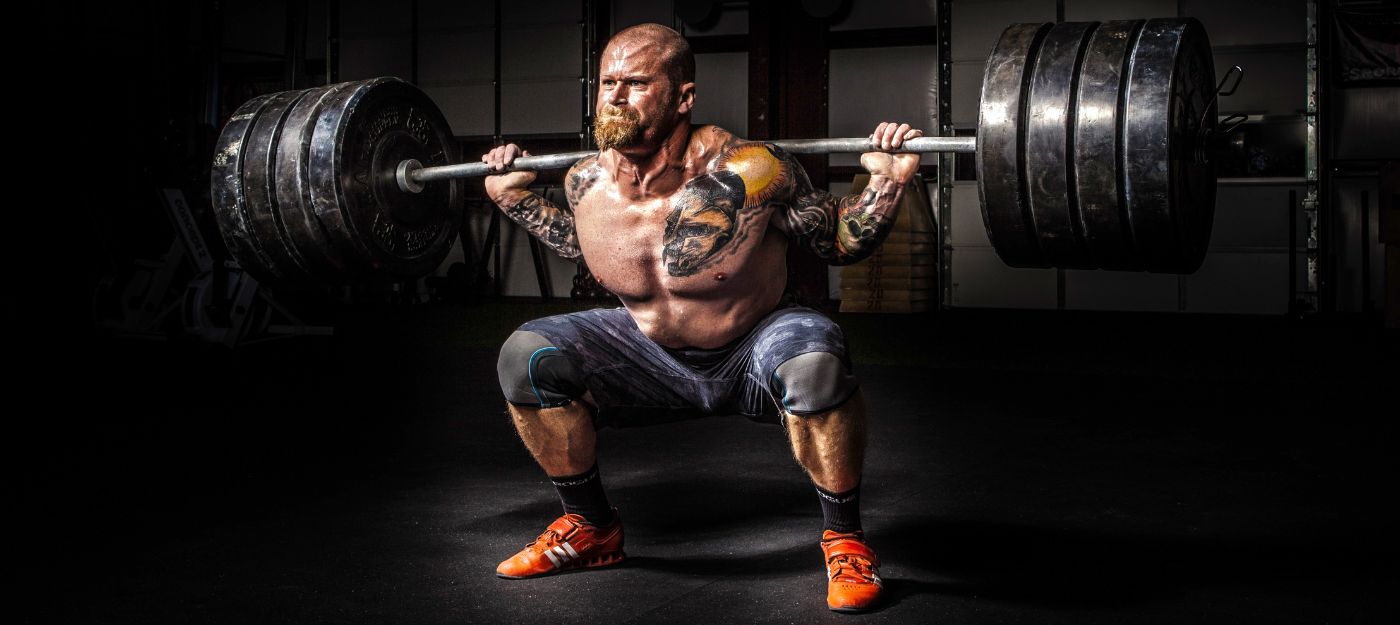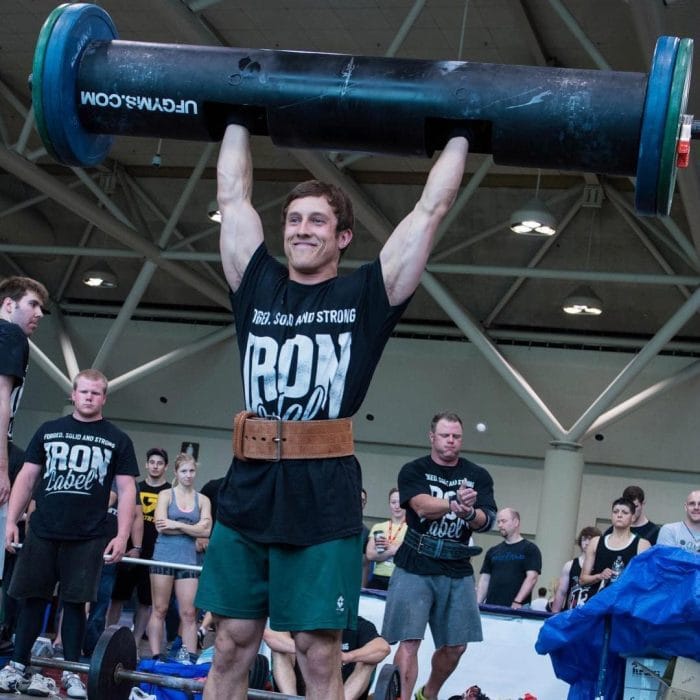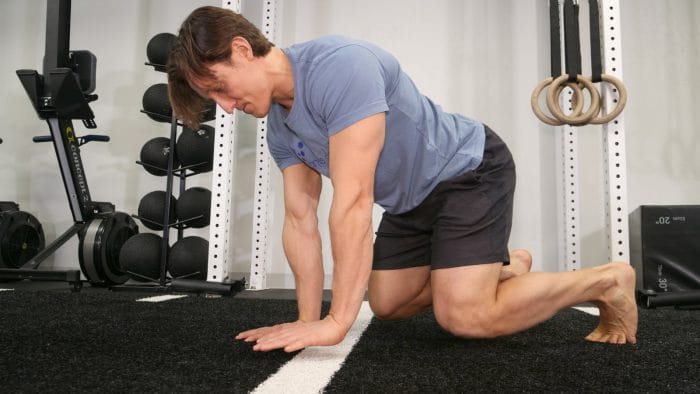
3 Reasons Strength Athletes Need Quadrupedal Movement Training
Dain Wallis knows a thing or two about what it takes to get really, really strong. After becoming a competitive Strongman in 2008, Wallis went on to claim the title of Canadian Lightweight Strongman Champion twice. Not content with being successful only on home turf, he also competed at the World Championships five times, taking out third place in his final competition in 2018.
The key to getting that spot on the podium? Quadrupedal Movement Training.
The puzzle of programming for Strongman
The sport of Strongman requires athletes to complete impressive feats of strength, speed and endurance such as deadlifting vehicles, flipping tyres, picking up Atlas stones, Farmer’s walks and more. Depending on the demands of each particular event, competitors typically aim to lift more weight than others or complete more reps in a given time.

Two-time Canadian Lightweight Strongman Champion and five-time World Championships competitor, Dain Wallis.
Usually the domain of “very large, strong individuals”, the 5’8”, 180lb Wallis aimed to be as strong as he could while staying within his lightweight class.
“From 2013 to somewhere around 2016, my approach to training was just to do as much as I could, as heavy as I could, and eat all the food,” said Wallis.
“I was always playing around with new methodologies to continue trying to adapt and push my body but my training was consistent at 4-5 days a week. 2-3 days would be really heavy and then the other two days would be dynamic or more repetition-based hypertrophy work. I was constantly trying to push some lift up at one point in time.”
Juggling the balance between volume and intensity in an effort to eke out higher and higher levels of performance was a “fun puzzle” to be solved.
“I was always trying to figure out how to advance my training and find my areas of opportunity so I was constantly pushing myself through those years,” he recalled.

Wallis performing a log lift.
From injury to the podium
After tying for 4th place at the 2015 Arnold Strongman World Championships, Dain sustained a knee injury (a partial patellar tendon tear) that took him out of competition for more than a year.
“I realised, ‘Ok, I’m 30 and I’ve messed up my knee. Things are probably not going to get better if I just go back to what I was always doing,’” Wallis said.
With the guidance of his coach and partner, Animal Flow Master Instructor Fréyja Spence, Dain began to incorporate quadrupedal movement training into his rehab and training.
“I still remember [my first attempt at] Static Crab and trying to do Static Crab limb lifts,” he smiled. “I was so frustrated because I couldn’t do them; in fact, I may have been the most frustrated I’ve ever been in the gym. I remember screaming at Fréyja, ‘The human body doesn’t work that way!’
“My shoulder blades were so glued [to my ribcage] that I couldn’t lift a hand off the ground in Crab. That wasn’t happening.”
Wallis’ initial frustration turned to gratitude over time as his movement patterns improved and he gained more mobility.

Animal Flow was a crucial part of Wallis’ return to competition.
“Animal Flow was a godsend,” he explained. “It really helped me with my thoracic spine and hip mobility which then allowed me to achieve a top 3 finish at World’s 2 years later.”
Elated with his achievement and ready to tackle other goals in life, he retired from the competitive arena in 2018 and turned his focus to coaching others.
Longevity and consistency: the keys to strength
Wallis’ approach to coaching strength athletes of all kinds centers around consistency, health and longevity. He’s crystal-clear as he articulates the link between getting strong and staying strong.
“The key to getting strong is to consistently train the skills required to get strong,” he explained. “This means you have to consistently train the same lifts over and over and over. So, if you want to get good at squatting, you’re going to have squat all the time. You can’t just take weeks off and then go back to it. You have to do it consistently.”
The challenge with maintaining this consistency is that it requires an equally dedicated approach to recovery and taking care of your body. Fail to recover adequately and you’ll be at a significantly greater risk of getting injured.
3 reasons strength athletes need Animal Flow
1. Improved range of motion
While there’s a certain amount of rigidity that is required in strength sports, too much rigidity is likely to lead to injury. Ensuring you have adequate range of motion at hips, shoulders and spine is crucial for longevity, something Wallis advocates.
“When I was competing, Animal Flow was basically the one thing that I did outside of what a typical lifter would do. The changes I saw in my thoracic spine, scapulae and shoulders, and hip range of motion was amazing. All of it can be attributed to Animal Flow and all of that made me a better lifter.”
2. Load variability
When you have to train movement patterns under external load repetitively, it’s important to strategically incorporate variability, says Wallis.
“That’s where I believe Animal Flow has the biggest benefit for anybody who wants to get really strong,” said Wallis. “It’s going to keep your joints a lot happier. It’s going to make sure you don’t get stuck in those sagittal plane movements and end up with tendinosis or tendonitis or any of those fun things that can negatively crop up.”
3. Whole body stability and proprioception
Proprioception (also known as joint repositioning sense) refers to your awareness of your body in space. It plays an important role in joint stability and motor control, both of which are crucial when you’re throwing heavy implements around.
Research conducted using Animal Flow has shown significant improvements in joint repositioning sense, fundamental stabilization and dynamic single-limb balance abilities.
“People hear ‘stability’ and they think it’s something like mobility so they’re not so interested in it. But strength and stability go hand in hand,” said Wallis. “If you want to be strong, you need to be stable.”
Incorporating Animal Flow into your strength program
Dain’s go-to Animal Flow exercises include Static Crab, Loaded Beast, Crab Reach, Scorpion Reach and Front Step.
“If you spend a bit of time on those five moves, you can get a lot out of them for a strength athlete,” he said.
Crab, in particular, is a favorite.
“Take any strength athlete and look at the typical shoulder position, where they’re locked into a kyphotic, forward-head posture. Even just being in Static Crab is so important for shoulders. It’s powerful, it can be adapted and made accessible by changing the hand position so it’s a great starting point.”
Dain encourages his clients to take a Static Activation such as Crab and sprinkle it throughout their day, aiming for anywhere from 10 seconds to 60 seconds.
He recommends supersetting moves such as Crab Reach and Scorpion Reach with traditional movements, like bench press, squat or deadlift.
Strength that’s grounded in science
“I wish more strength athletes knew how backed in science Animal Flow really is. It’s not a fad or just another thing to do. A lot of people might view it as just a novelty. That’s definitely what I thought before I started doing it, for sure, especially coming from a strength background.
“It’s not a novelty, it’s an extremely powerful tool that has applicability to literally anybody, depending on what their goal is. You can use it in so many ways that there’s a sweet spot for anybody and whatever they want to accomplish.”
Try this Flow
In the video below, Dain demonstrates a beginner-level Flow that includes some of his favorite Animal Flow movements. This Flow can be incorporated into your warm-up or used as active recovery. You can find tutorials for each movement at Animal Flow On Demand. Sign up for a free 14-day trial.
Ready to explore more strength and mobility? Make the most of your Animal Flow On Demand 14-day free trial and try Mobility Class #6 – Strength. Program creator Mike Fitch leads you through a 25-minute class incorporating two of Dain Wallis’ favorite Animal Flow moves, Scorpion Reach and Crab Reach. Suitable for beginners so no prior experience is necessary!
